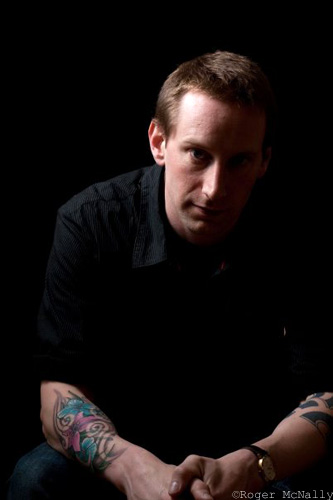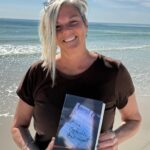‘The Worst Thing in the World’ by Steve Mosby
 I’ve been thinking about dead people recently. More specifically, dead women.
I’ve been thinking about dead people recently. More specifically, dead women.
That’s not as weird or wrong as it sounds. I’m a crime writer, after all, so it’s natural for dead women to crop up. And these are fictional dead women, not real ones. The victims of murder – and worse – that cross my mind are pretty much always made-up, so it’s a harmless process: I think about this stuff; I write it down; and someone eventually reads it (cough cough). Nobody in the real world actually gets hurt.
But I’ve been thinking about the subject more than I normally do, for a few reasons. It started a couple of months back, during a conversation with another writer, who mentioned that my writing often contain ‘dead girlfriends’. Guilty as charged. As it happens, it’s even worse than that. I started out doing short stories, and even then I was well aware of my unfortunate tendency to include dead girlfriends. That was before I started writing my first book, so I should have known better, and yet The Third Person happened anyway.
Okay, it has a missing girlfriend rather than a dead one, but that’s the slimmest of technicalities and, from a narrative standpoint, they do exactly the same job. In a leap of unbridled creative genius, The Cutting Crew has an estranged wife rather than a dead one. Go, me. Except don’t go too far, because the story’s driven by an anonymous dead girl that haunts the main character. Next, in The 50/50 Killer, there’s simply a very obvious dead girlfriend. It’s shameless. Let’s just move on quickly … to Cry For Help, in which the whole concept is based around dead girlfriends. Now, at this point you might be wondering what the hell is wrong with me (I am), and we haven’t even got to Still Bleeding, which begins with the suicide of the main character’s wife. Jesus. Wept.
It’s a cliche, obviously. But I didn’t give it too much more thought until a couple of weeks ago, when I went to the Theakstons Old Peculier Crime Festival in Harrogate and was on a panel about the crossover between crime and horror. The question of violence against women came up (mainly because it usually does) and the moderator, Barry Forshaw, asked me something along the lines of “are we all taking this too seriously?”. Basically, that defense I mentioned above – that these are all fictional characters, so it doesn’t matter. I did trot that out – “yes, fiction is essentially harmless on that level” – but it also got me thinking. Fiction is harmless enough: fine. But it mirrors real life. What is it about society that makes these tropes (women as victims; men as survivors, rescuers, overcomers) continually appear, especially in crime fiction? Worse – what is it about my life in particular?
And the third thing was this article: “Want to give your male lead some depth? Give him a dead wife.”
I’ve not seen Inception, but the general points there ring loud and true. Dead women are often used as the motivation for men to go on quest narratives, at the end of which they often finds themselves with a new woman. Nothing wrong with that as an individual story. It’s when you have loads of them that you need to think – to look at the mirror being held up, and the society that’s being reflected. Men are strong, survivors, performers, doing the action part of things; women are weaker, to be rescued, motivations, prizes to be lost and gained. This isn’t always the case, but it’s the case often enough for you to begin to smell something a bit patriarchal, a bit awkward and uncomfortable. Certainly enough for you to ponder “what is this and do I want to be perpetuating it?”
So there you are – I’m on the floor now. The rest of this post will be a somewhat desperate attempt to find my feet again.
Let’s deal with the obvious, first of all. Not all crime fiction is guilty of using dead women in such a cavalier fashion. But this is dodging the issue. Yes, there are plenty of books with strong female protagonists; there are plenty with female protagonists; there are plenty with protagonists who have female names. (You see what I did there). And lots of crime books deal with different sorts of crimes. All true. And yet. You’d still be hard pressed to find even a fraction as many woman-goes-on-quest-after-man-dies narratives as the reverse.
And anyway, we’re talking about me.
So – what about me? Why do I include it? Well, I can think of a few reasons. The first is that I tend to write first-person, straight, male protagonists. I’m firmly of the opinion that you don’t have to write what you know, and yet on those levels I usually do. They’re my default settings. The issues I’m drawn to at the moment don’t really depend on gender (or indeed race or sexuality), and so writing a character as female (or Black or gay etc) would be doing so simply to make a point. I have nothing much to say about any of those things in and of themselves, so I don’t focus on them. And while my main character might be male, white and straight, I’m also trusting that anyone who’s not those things will still be able to identify with the problems he’s going through.
If he has a dead girlfriend, then it’s not the sex of that character that matters but the relationship they had and what the loss means to him. It’s not “dead woman”; it’s “dead loved one”. For example, Mercer, in 50/50 Killer, has a motivating relationship with a dead colleague; Sarah in Still Bleeding has a dead father; and so on. It’s the death that matters, not the gender. It’s about something big and horrible in the character’s past that they’re driven either to face or to run away from, and exploring what happens when they do.
It doesn’t have to be death, of course, but it often is. And the main reason is that I’m fucking terrified of people close to me dying.
Prepare for a brief downer: everybody dies. The most blatant lie you get in fairy tales is “and they all live happily ever after…”, because we all know they don’t. You can be in love with someone so hard it feels your heart will burst, and they can feel the same, and you still know deep down that there’s no happily ever after. There’s just a putting off of the inevitable. One day, either you’ll die and leave them alone, or else you’ll be the one who’s left. If you’re a miserable sod like me, you might have even asked yourself the question: would I rather die first or last? Avoiding the question won’t help. You can be as happy as you like. The question still applies to you, and if you love someone then it’s going to get answered eventually.
Sorry about that.
To me, it’s the worst thing I can think of, which means I spend most of my life not thinking about it at all. I don’t even need to try anymore – I can successfully not think about it without any effort on my part, and generally skip blissfully through my days, enjoying the illusion. But that’s life, and fiction is fiction. When it comes to thinking up stories and writing them down – especially crime or horror stories – it’s natural to want to go a little deeper, to play with things that frighten you, to imagine being in scenarios where the worst thing in the world has happened – and then look at what happens afterwards. So The 50/50 Killer explores the idea of needing to do something that harms someone you love. Cry for Help explores the idea of hurting someone by not doing something. Still Bleeding asks whether we should look at death, and what happens when we do or don’t. And so on. I’m happy with that.
Maybe, anyway. Because Black Flowers, which I’m still working on, looks at the larger question of whether it’s particularly healthy, all this writing about death. But I’m sure it is … yeah, I’m sure. After all, like I keep telling myself, they’re just characters, aren’t they. It’s all just made up.
Special thanks to photographer Roger McNally for providing the photo of Steve. Check out more of Roger’s work at Roger.The.Dodger’s photostream on Flickr.














Hi there everyone – thanks for the comments, and glad you liked the post. And, of course, if you do check out any of my books then I hope you like them too. 🙂
In the meantime, a massive thank you to Elizabeth for shining a spotlight on me and my books. Very much appreciated – and I enjoyed doing the blog.
Great read and great points.
I’ll definitely have to check out these books.
…not that I’m obsessed with dead women or anything.
*slowly backs away*
Wonder piece, Steve. You’ve certainly intrigued me concerning your books and I’ll have to check them out. Thank you Steve and Elizabeth for this.
Steve, that’s a very thought provoking article. I think most people do what they can to avoid thoughts of death as it pertains to them and their family. And generally things like religion help comfort them. I know I certainly want to avoid the question of who dies first in a relationship. Probably healthy to focus “death thoughts” on the great fiction that you and other writers come up with!
I follow Elizabeth’s blog each day, thanks so much for taking the time to submit an entry! This has been a great week reading up about your works.